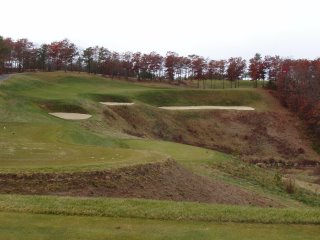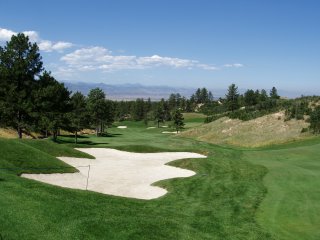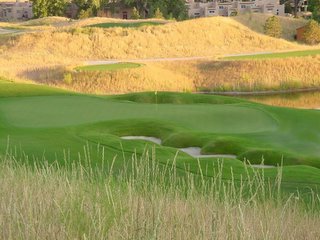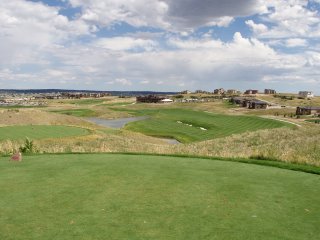The evolution of a golf course architect's designs

Here's something interesting when you have time for a long term project. Take your favorite architect and play three or four (or more) of his designs in chronological order. Then trace the evolution of his design style and see how his philosophy changed over time. Two good examples are Brian Silva and Jim Engh.
 Silva began his career building what most people identify as classic parkland penal layouts. For example Captain's Club on Cape Cod (1985). He had an epiphany upon seeing the 5th at Dye's PGA West and decided that the designs of Seth raynor and C.B. Macdonald were more interesting to all levels of play and widened his fairways and turned hzards perpendicular to the line of play.
Silva began his career building what most people identify as classic parkland penal layouts. For example Captain's Club on Cape Cod (1985). He had an epiphany upon seeing the 5th at Dye's PGA West and decided that the designs of Seth raynor and C.B. Macdonald were more interesting to all levels of play and widened his fairways and turned hzards perpendicular to the line of play.He also began expirimenting with new bunker shapes...more strip bunkers and "Green Monsters" - huge mountains with bunkers cut vertically into the side of the hill. Thus, Waverly Oaks (1999 - top pic) shows his transitional period and Red Tail and Black Rock (2003, 2004 respectively, second pic is Red Tail) show the same concepts and bunker designs in more refined form than earlier prototypes.
It's the same for Jim Engh. You can see it especially in the shapes of his "muscle bunkers" and in the width of his fairways and locations of hazards over time. First, at Sanctuary (1997, pictured right), then at Red Hawk Ridge and Redlands Mesa, ending with the
 most pronounced shapes recently, most notably at Fossil Trace (2003) and Pradera (2005). The bunkers get deeper and more pronounced over time. Moreover, hazards appear more frequently in the middle of fairways, especially on line of charm filled par-5s. 18 at Pradera is on the bottom, 18 at Fossil is right below. I'll be looking into this phenomenon a little more in the coming weeks.
most pronounced shapes recently, most notably at Fossil Trace (2003) and Pradera (2005). The bunkers get deeper and more pronounced over time. Moreover, hazards appear more frequently in the middle of fairways, especially on line of charm filled par-5s. 18 at Pradera is on the bottom, 18 at Fossil is right below. I'll be looking into this phenomenon a little more in the coming weeks.







0 Comments:
Post a Comment
<< Home